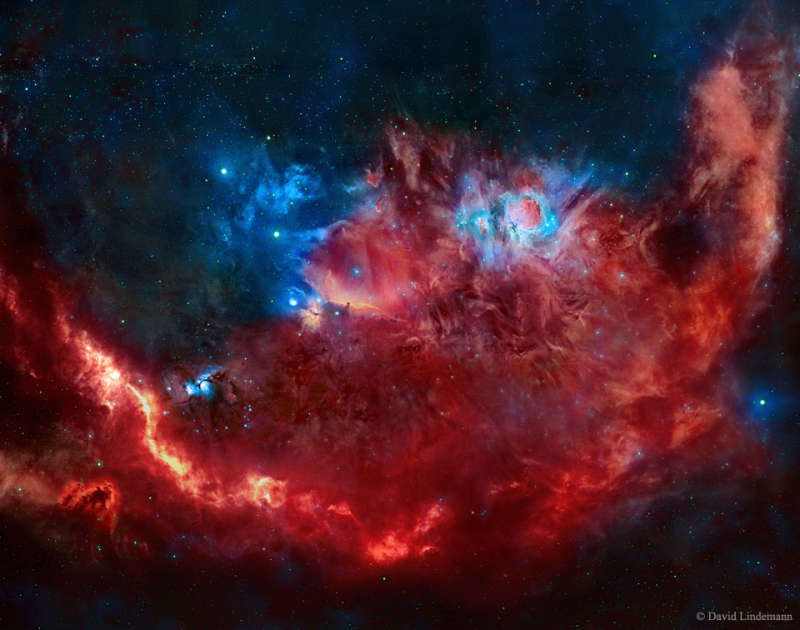
|
Credit & Copyright: David Lindemann
Explanation:
When did Orion become so flashy?
This colorful rendition of part of the
constellation of Orion comes from red light emitted by
hydrogen and
sulfur
(SII), and blue-green light emitted by
oxygen
(OIII).
Hues on the
featured image
were then digitally reassigned to be indicative of their
elemental origins -- but also striking to the
human eye.
The breathtaking composite was
painstakingly composed from
hundreds of images which took nearly 200 hours to collect.
Pictured, Barnard's Loop, across the image bottom,
appears to cradle interstellar constructs including the intricate
Orion Nebula seen just right of center.
The Flame Nebula can also be quickly located,
but it takes a careful eye to identify the slight indentation of the dark
Horsehead Nebula.
As to Orion's flashiness -- a leading explanation for the origin of
Barnard's Loop is a
supernova
blast that occurred about two million years ago.
Share the Sky: NASA Open API for APOD
|
January February March April May June July August September October November December |
| ||||||||||||||||||||||||||||||||||||||||||||||||
NASA Web Site Statements, Warnings, and Disclaimers
NASA Official: Jay Norris. Specific rights apply.
A service of: LHEA at NASA / GSFC
& Michigan Tech. U.
Based on Astronomy Picture
Of the Day
Publications with keywords: Orion - Orion Nebula
Publications with words: Orion - Orion Nebula
See also:
- Alnitak, Alnilam, Mintaka
- Orion and the Running Man
- APOD: 2025 August 13 Á Trapezium: In the Heart of Orion
- APOD: 2025 April 20 Á The Orion Nebula in Visible and Infrared
- A December Winter Night
- APOD: 2024 November 4 Á M42: The Great Nebula in Orion
- APOD: 2024 September 10 Á Horsehead and Orion Nebulas
